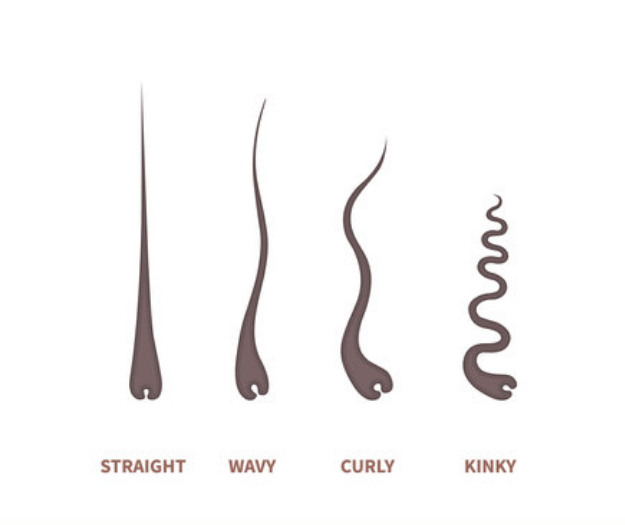Knowing your hair type is the key to maintaining and treating it effectively! Letting you know if your hair is straight, wavy, curly or coily will help you select the proper products to avoid damage and keep a healthy scalp. Here’s how to know what hair type you have, and why it matters for your hair care routine.
Why It Matters to Know Your Hair Type
Hair type affects:
- Product: Shampoos, conditioners and styling products all work well on some hair types—but not on others.
- Hair care routine: What you wash your hair with, how often you heat style it, and what treatments to use are altered for different hair textures.
- Hair health: Knowing your hair type can help you prevent breakage, frizz and more.
At HairNeva, we are all about personal hair care and understanding your hair type is the first step to stronger, healthier hair.
So What Does Your Hair Type Depend on?
The type of hair one has is a comprehensive amalgam of properties which all contribute to whether your hair is bone straight or kinky curly. From curl pattern, to the diameter of strands, condition of your scalp and how porous and elastic our hair truly is.
1. Curl Pattern
Straight (Type 1): Hair lays straight from the root and tends to be flat. Shiny but may lose stiff appearance if fine.
Wavy (type 2): Hair is shaped like a loose “S”. Versatile but prone to frizz.
Curly (Type 3): Well-defined curls, usually springy and full of body. Requires moisture-rich care.
Coily/Kinky (Type 4): Dense, very tight coils that are fragile and susceptible to breakage. Needs careful detangling and hydration.

2. Hair Strand Thickness
Hair thickness is measured per strand:
- Fine: Thin and fragile. More prone to breakage. Rejuvenating treatments, such as PRP therapy or exosome treatments may help to promote thicker, healthier hair.
- Medium: Moderately thick, pliable and cushioned.
- Thick/Coarse: Durable and tough, thick hair can be stubborn to style and maintain.
3. Hair Porosity
Porosity indicates how well your hair absorbs and retains moisture:
- Low porosity: Hair is resistant to soaking up moisture and products may sit on hair.
- Medium-porosity: Holds in moisture, receives benefit from almost all products.
- High porosity: Hair gets wet super-fast but also loses the water fast, resulting in a frizzy or dry look.
4. Scalp Condition
The health of the scalp is key to healthy hair. Key aspects include:
- Sebum production: The overall oiliness or dryness of your scalp.
- Sensitivity: Irritability or inflammation can occur in a few scalps.
- Health indicators: Dandruff, psoriasis, or fungal infections are linked with the level of hair growth and quality.
5. Hair Elasticity
Strength and flexibility is hair elasticity. Stretch a strand gently:
- Healthy hair stretches and returns to its original length without snapping.
- Low elasticity means weak hair, which could be the result of chemicals, heat or lack of nutrients.
How to Determine Your Own Hair Type, at Home
- Wash and Air-Dry Hair – Start with clean hair free from products. Let it air-dry naturally.
- Observe Curl Pattern – Identify your hair type (straight, wavy, curly, coily).
- Check Strand Thickness – Take a single strand between your fingers to feel fine, medium, or coarse hair.
- Test Porosity – Place a hair strand in a glass of water. Sinks quickly = high porosity, floats = low porosity.
- Assess Scalp Health – Check for dryness, oiliness, flaking, or irritation.
How to Take Care of Different Hair Types
Fine Hair: Stick to light products and explore nourishing treatments such as PRP or exosomes for body and durability.
Medium: Balance moisture, protective styles Low to Medium Hair Care, Moisturize, Protective Styles Ideal Style.png
Thick/Coarse: Use moisturizing creams and oils to combat frizz, try not to overheat your hair.
Curly &Coily Hair: Deep conditioning and gentle detangling is a must; protective styles cut down on breakage.
Conclusion
It’s not just a matter of appearance, identifying your hair type also includes strand thickness, scalp condition and porosity and elasticity. Knowing these means that you can choose the right products, avoid hair damage and ensure healthy growth.For less robust or thinning hair, advanced therapies like PRP therapy and Exosome Therapy can also enhance resistance and encourage growth. Knowing your hair type and taking good care of it is crucial for strong, healthy, resilient hair.
